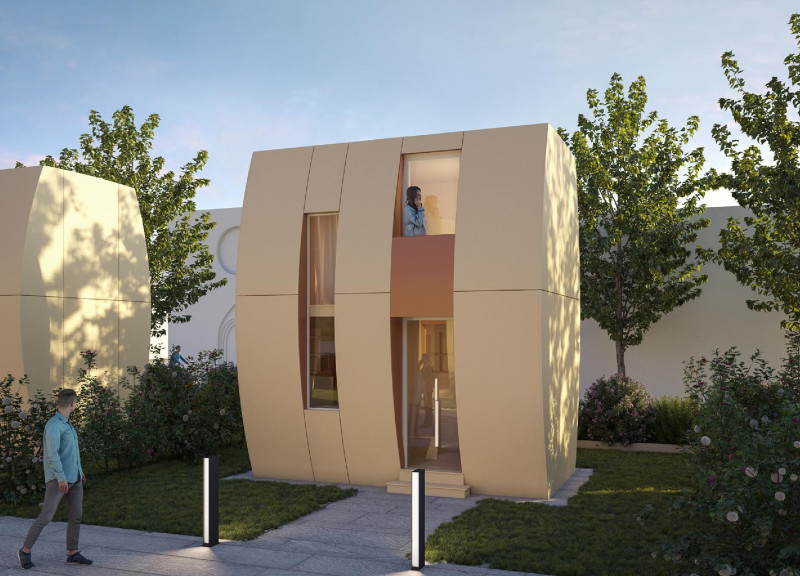5 key facts about this project
The Microhouse "SOFF" is a compact living solution located in Amatrice, Italy, a city notably affected by the 2016 earthquake. Designed to address modern housing needs, the SOFF house employs a contemporary approach that balances traditional building elements with functional design. Its unique shape, inspired by a prism, features curved walls that significantly expand the usable space across two levels. This thoughtful design caters specifically to the requirements of young couples, offering a practical yet inviting environment.
Design Concept
The core concept of the SOFF house emphasizes maximizing usability through clever design. The curved walls create an open feeling while also defining distinct areas within the home. By integrating furniture into the structure, the design promotes efficiency and comfort, allowing spaces to serve multiple purposes without overcrowding.
Materiality
The building's framework consists of lamellar wooden elements, which provide both durability and flexibility. This choice of material supports the structure while aligning with sustainable practices. Cladding the exterior with high-pressure laminate (HPL) panels enhances the building's resilience and aesthetic appeal. The versatility of HPL allows for various finishes that can be adjusted according to preferences and local climate conditions.
Interior Layout
Inside, the living area is multifunctional, combining the kitchen, dining space, and sitting area along with a technical room. Such a design approach highlights the efficiency required in smaller living spaces. The bedroom, designed to accommodate a double bed, also includes a library, closet, and bathroom. This layout supports a comfortable living experience while maintaining privacy where necessary.
Sustainability Features
The design incorporates important sustainability aspects, including the option to install solar panels on the roof and systems for collecting rainwater. These elements aim to reduce the environmental footprint of the house, encouraging self-sufficiency and responsible resource management.
The SOFF microhouse reflects a balanced approach to modern living, addressing practical needs while remaining considerate of its surroundings. The thoughtful integration of space and materials makes it suitable for contemporary lifestyles.



















































